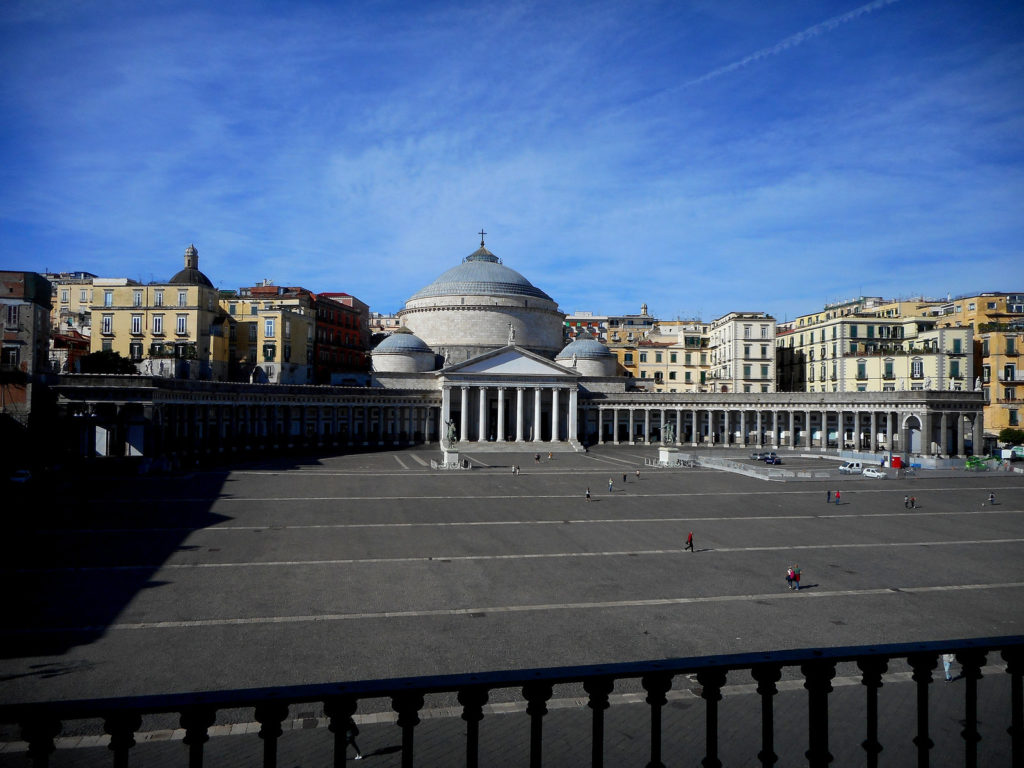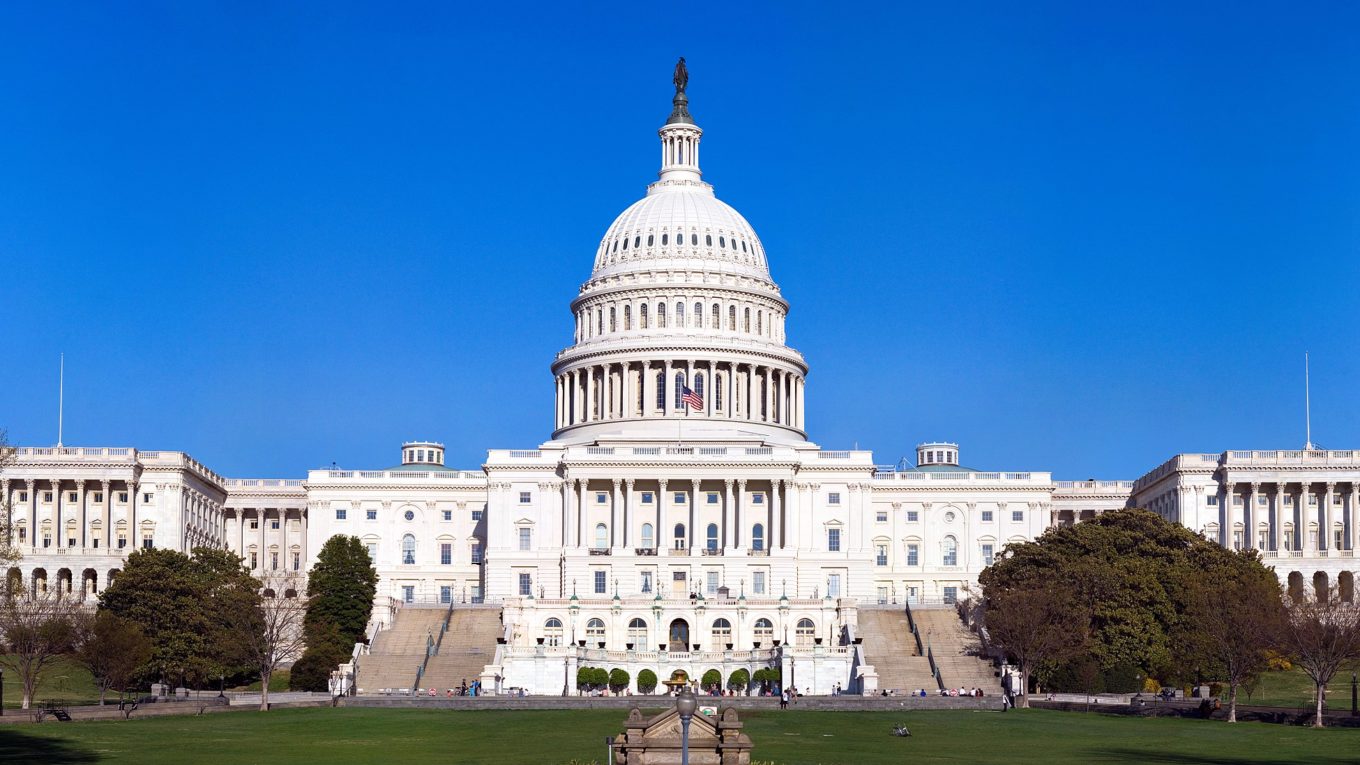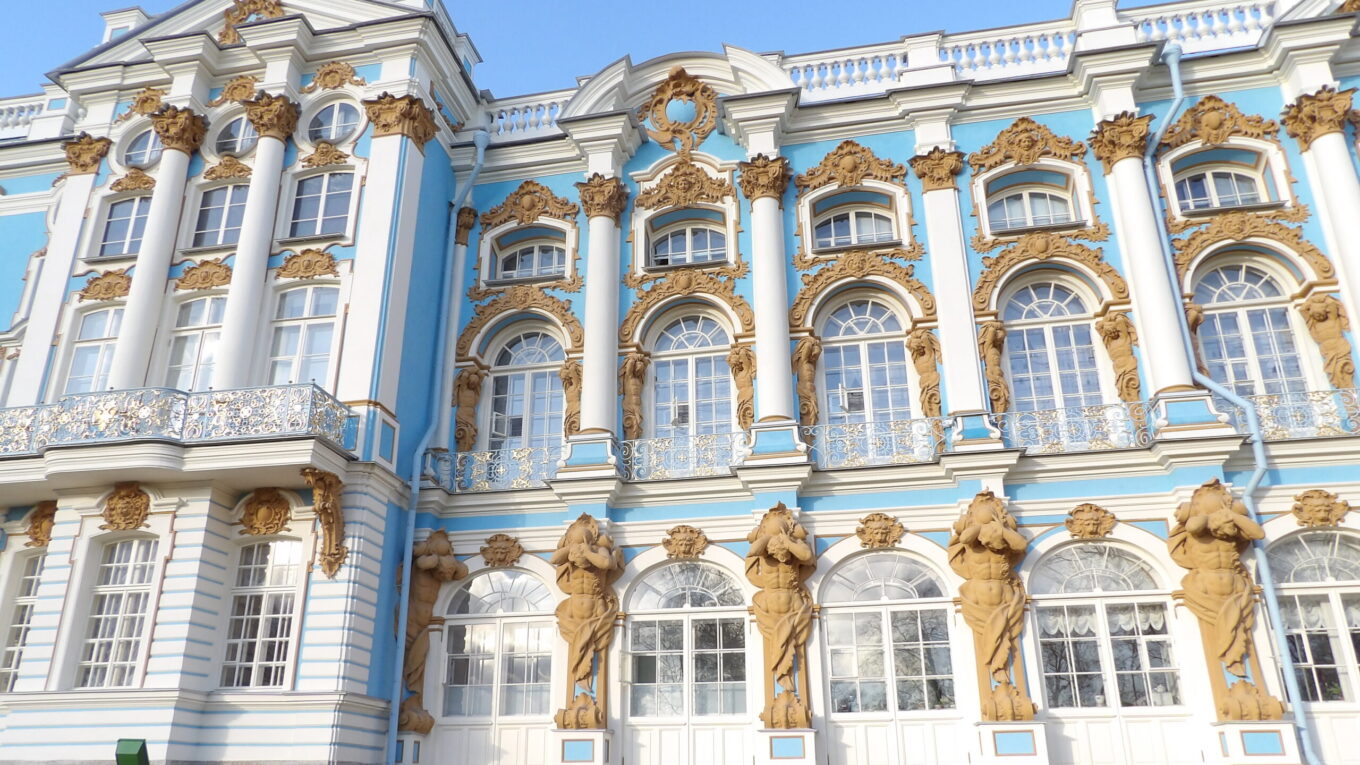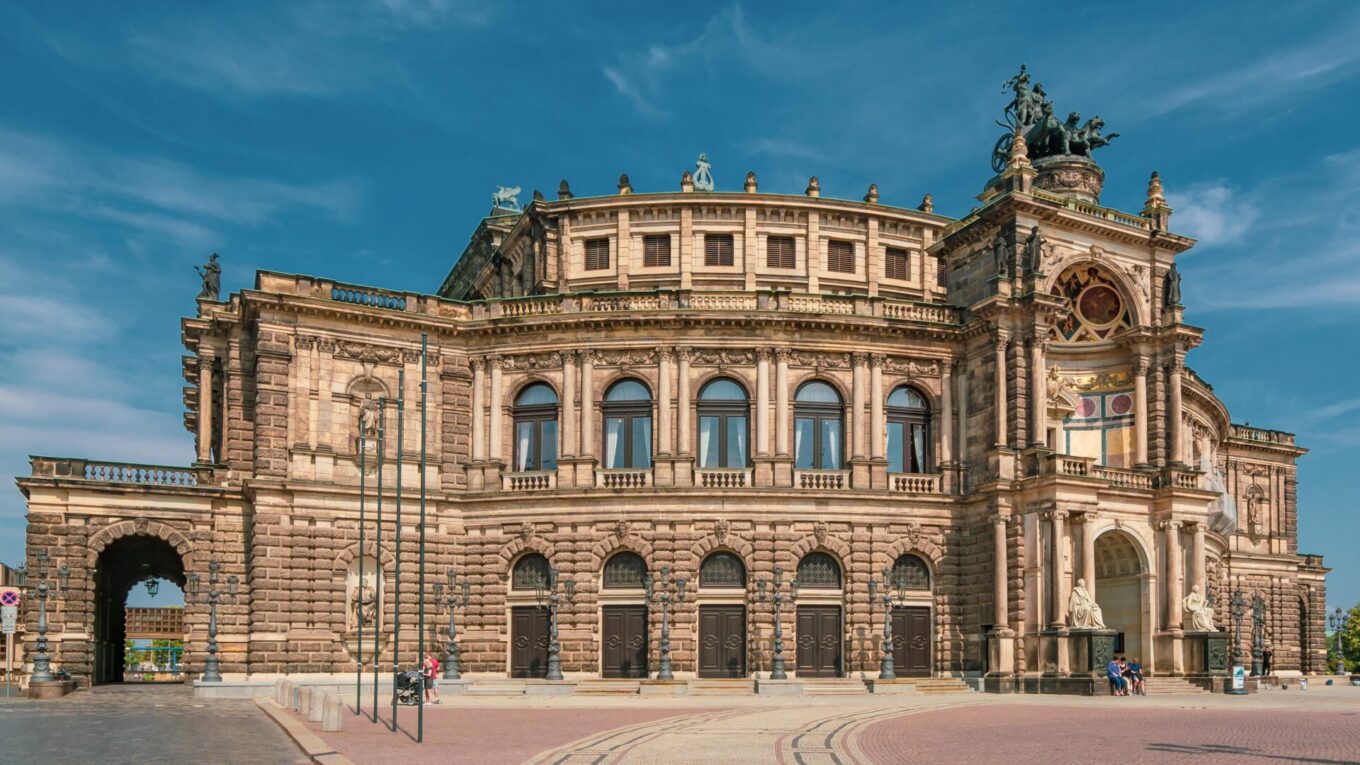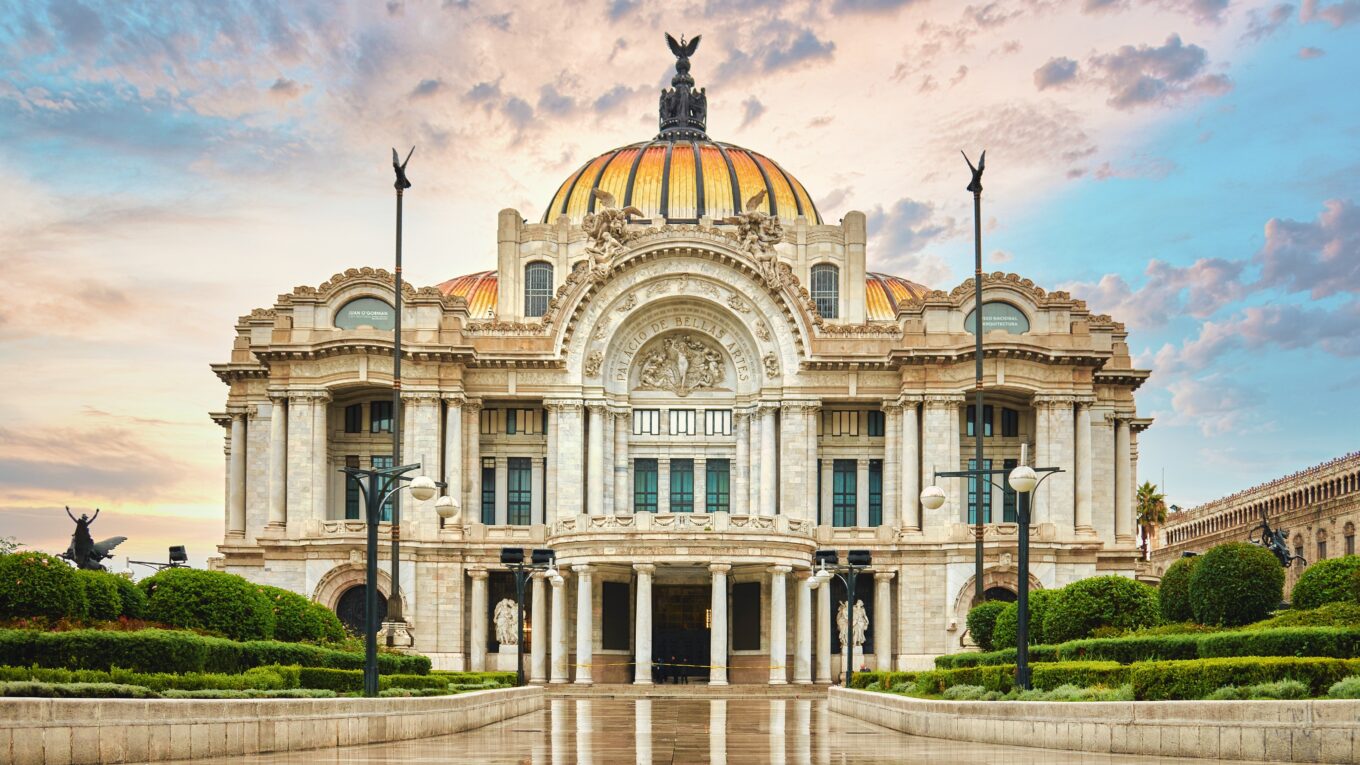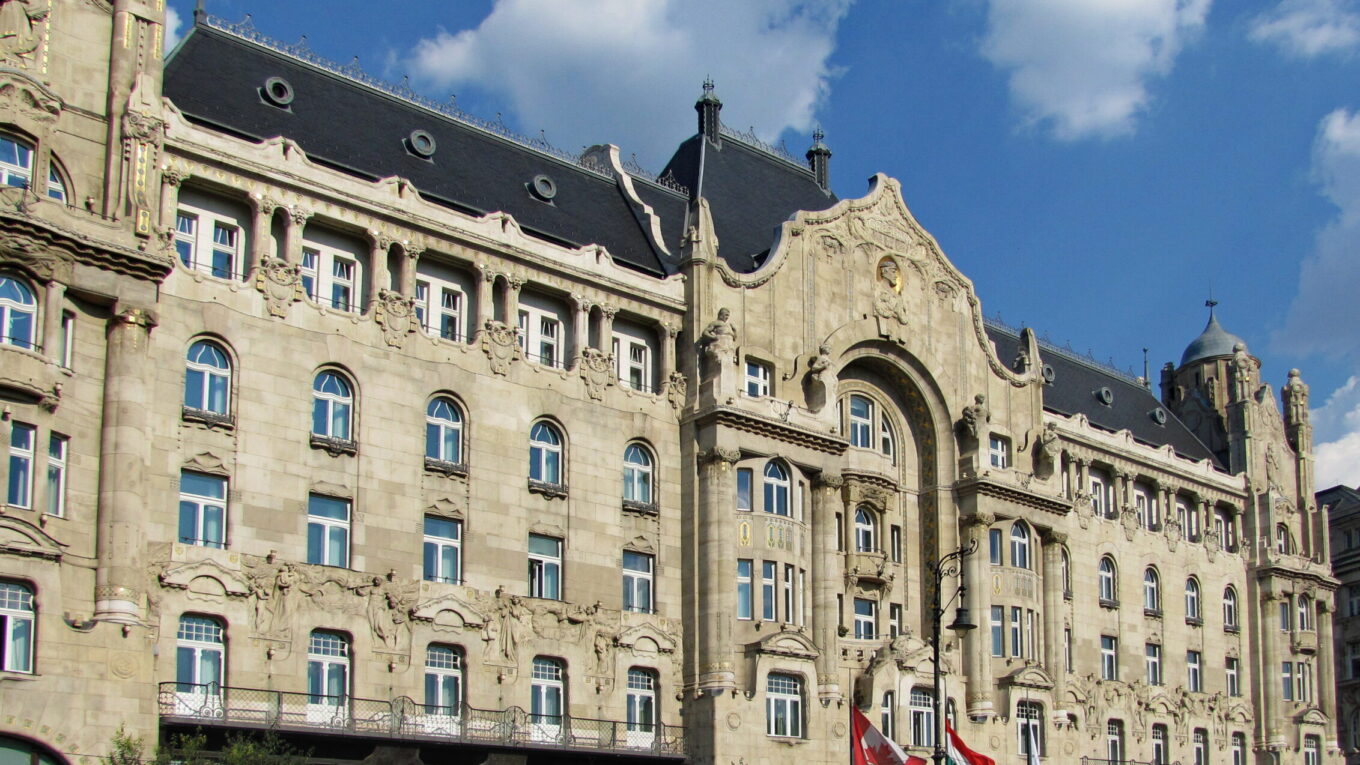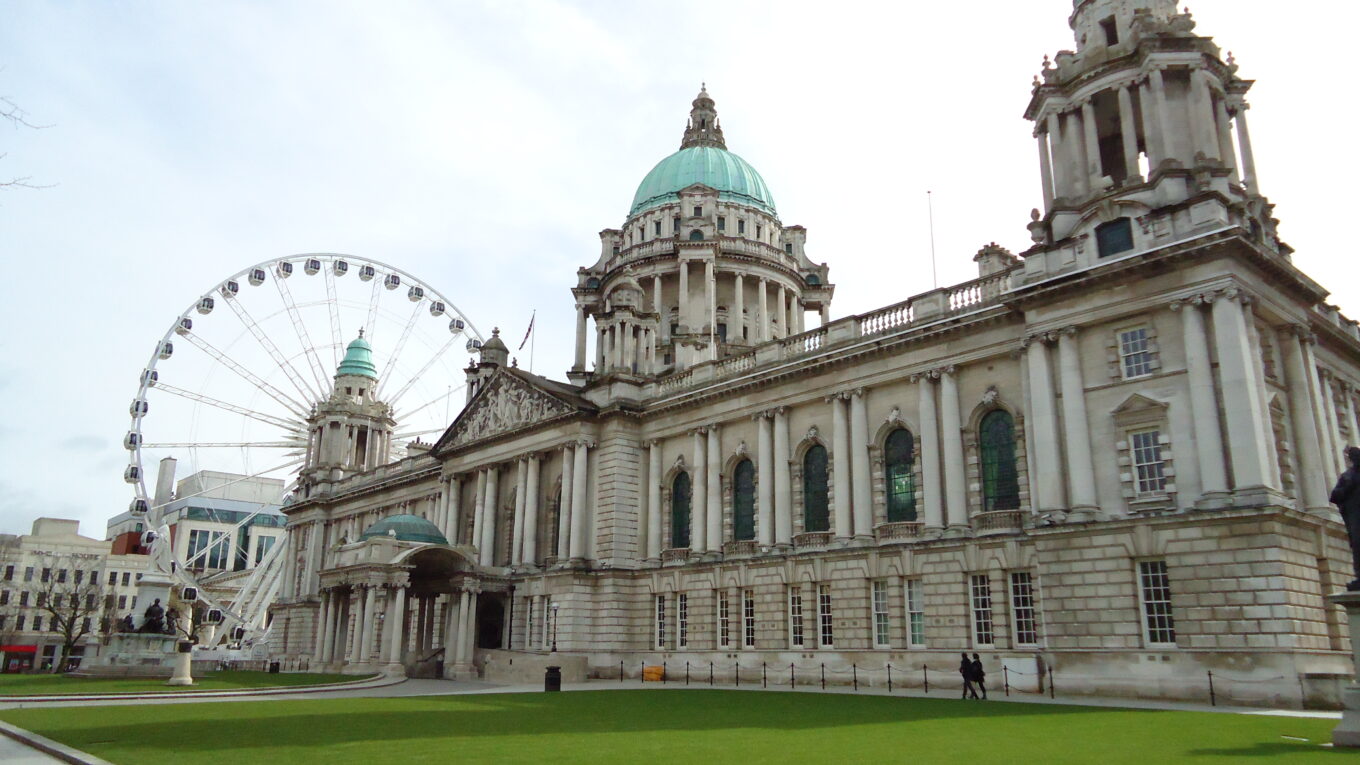Top 25 Examples of Neoclassical Architecture
Neoclassical is a style of architecture that borrows extensively from Classical Architecture, which is a term used to describe the ancient monuments of the Greeks and Romans. Neoclassical buildings borrow many of the same elements and ideologies found in ancient structures, such as temples, theaters, and basilicas. The Neoclassical Style emerged in the second half of the 18th century and continued to rise in popularity until it peaked in the 19th century. Neoclassical buildings as a whole are very stern, rigid, and austere, and they greatly contrast the decadent and lavish structures of the Late Baroque and Rococo Ages. This article will focus on the Architecture of the Neoclassical Period, highlighting 25 of the greatest Neoclassical Buildings and how each one exemplifies the thinking behind the Neoclassical Age.

When was the Neoclassical Period?
The Neoclassical Period lasted from the second half of the 18th century until the late 19th century. Below is a timeline of how Neoclassical Architecture evolved, and how it fits in with the other major phases in architectural history.
History of Neoclassical Architecture
Characteristics of Neoclassical Architecture
Domes

Domes are one of the most iconic features of Neoclassical Architecture. The use of domes in the Neoclassical age was nothing new, and countless Renaissance and Baroque buildings were also built with this same feature. Most Neoclassical Domes are circular in plan, and they often sit on a large cylindrical drum, which adds height and emphasis. The image above shows the central dome of the U.S. Capitol Building located in Washington D.C. Completed in 1866, the dome is the building’s most notable feature, and it’s topped with a large Bronze sculpture known as the “Statue of Freedom“.
Pediments
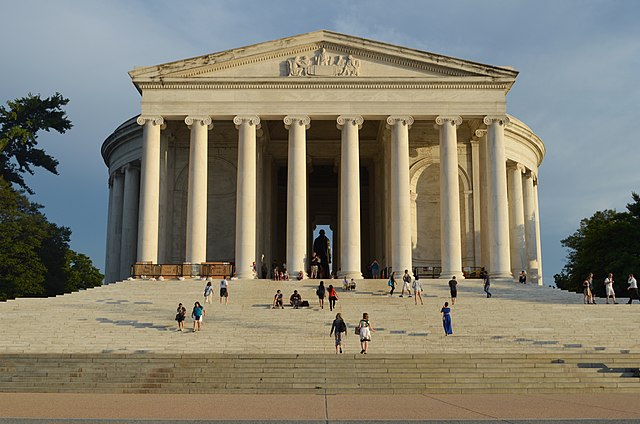
Pediments were utilized throughout Classical Architecture, and most often they signify the main entrance of a building. Virtually all Greek and Roman temples contain a large central pediment often supported by an array of evenly spaced columns. The use of a pediment supported by an array of columns is often referred to as a “temple-front” facade. Here at the Jefferson Memorial in Washington D.C., you can see a typical temple-front facade that features a pediment over 8 Ionic Columns. The overall design of the Jefferson Memorial greatly resembled that of the Pantheon in Rome. This idea of recreating ancient buildings is a major theme in the Neoclassical Age, and you can see this concept repeated in many of the buildings listed below.
Doric, Ionic, & Corinthian Columns
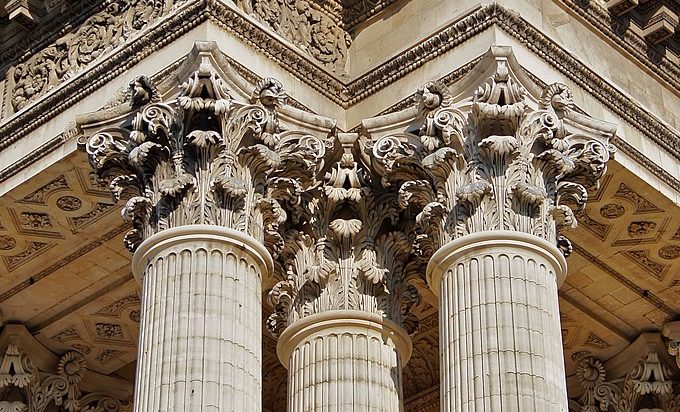
Another key element in Neoclassical Architecture is the use of column capitals from the Classical Orders. The three main forms of classical column capitals are Doric, Ionic, and Corinthian. These three types were first used in Ancient Greek Architecture and were then adopted by the Romans. Other styles, such as Renaissance Architecture and Baroque Architecture also utilize these same capitals, but it was the Neoclassical Style that attempted to use Doric, Ionic, and Corinthian capitals in the same exact manner that the ancient Greeks and Romans did. The image above shows a cluster of three Corinthian Column Capitals outside the Panthéon in Paris France. The Corinthian is the most elaborate of the three classical orders, and Corinthian Capitals always feature intricately carved, leaf-like protrusions like the ones seen here.
Marble and Bronze Statues
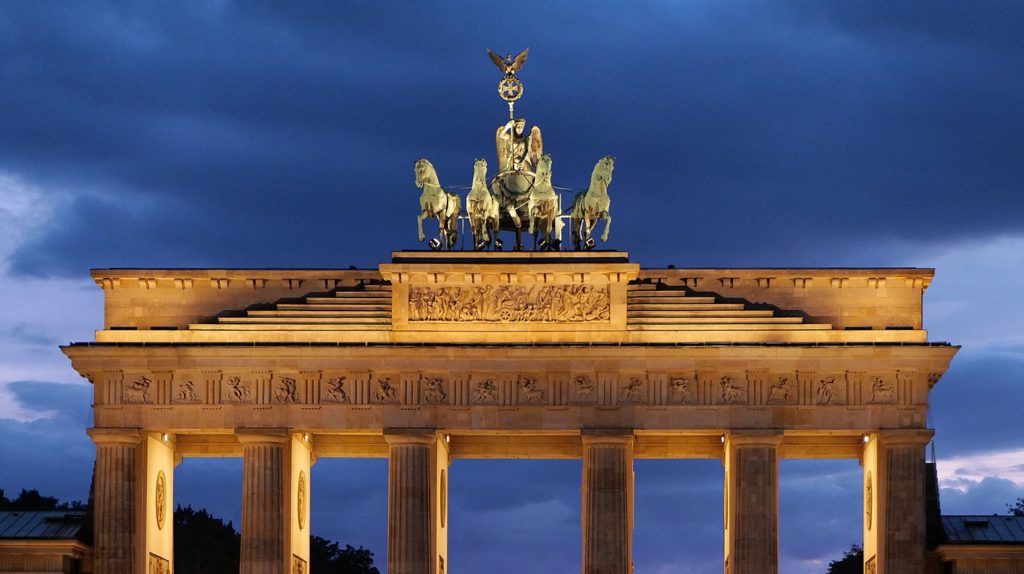
Statues can be found throughout the buildings of the ancient Greeks and Romans. Statues were used to decorate facades and interiors, and they were typically either carved from solid marble or cast in metals like Bronze. Neoclassical Architecture also utilized statues as a way to add detail and ornamentation to buildings. The above image shows a large bronze statue atop the Brandenburg Gate in Berlin. The statue is meant to resemble a Roman chariot, with four horses and a winged figure representing Victoria, the ancient Roman goddess of victory.
Coffered Ceilings
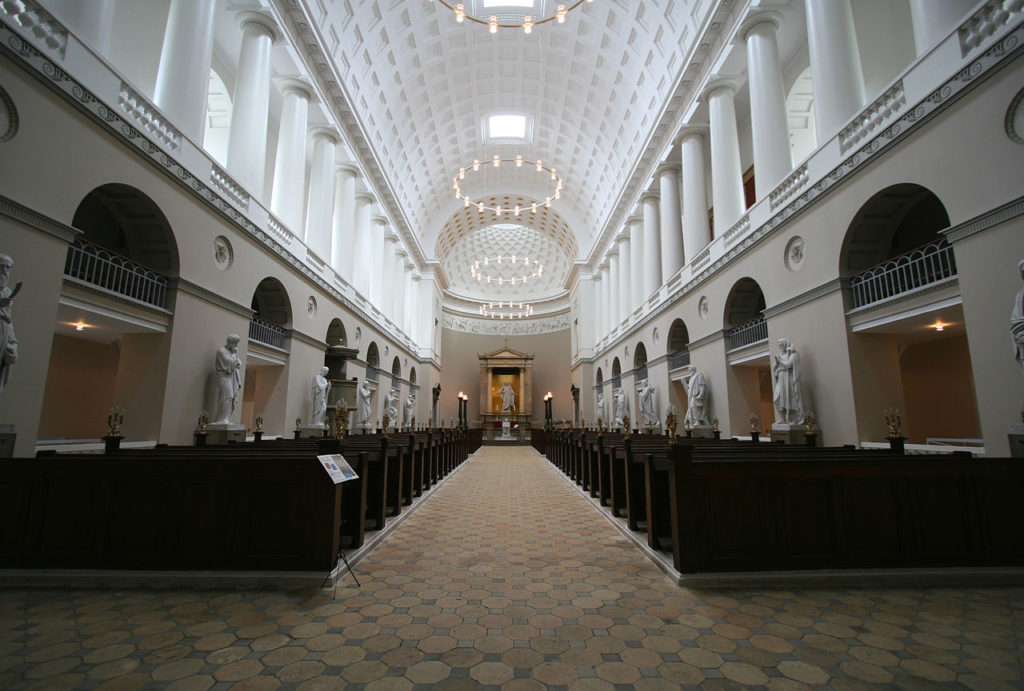
Coffered ceilings are another typical element found in a lot of Neoclassical Buildings. Many ancient buildings feature coffered ceilings, including the Pantheon. At the Pantheon coffered ceilings were introduced for two reasons, as a decorative feature and as a way to reduce the weight of the concrete dome. Most of the time in Neoclassical Architecture, coffered ceilings were decorative elements primarily made from wood. In the image above you can see the interior of the Church of Our Lady in Copenhagen Denmark. The nave of the church is a lengthy barrel vault, with a coffered ceiling composed of hundreds of small rectangular shapes.
Friezes

Friezes are stone slabs carved with shallow sculptural reliefs, and they can be found in many different works of Neoclassical Architecture. Friezes were used extensively by the ancient Greeks and Romans, and they depict important people and historical events. Here, on the exterior of the Arc de Triomphe in Paris, you can see an elaborately carved Frieze. But, because it’s from the 19th century, all of the figures are wearing suits and pants, instead of the tunics and togas seen in most ancient friezes.
Neoclassical Urban Planning: The Salt Works at Chaux

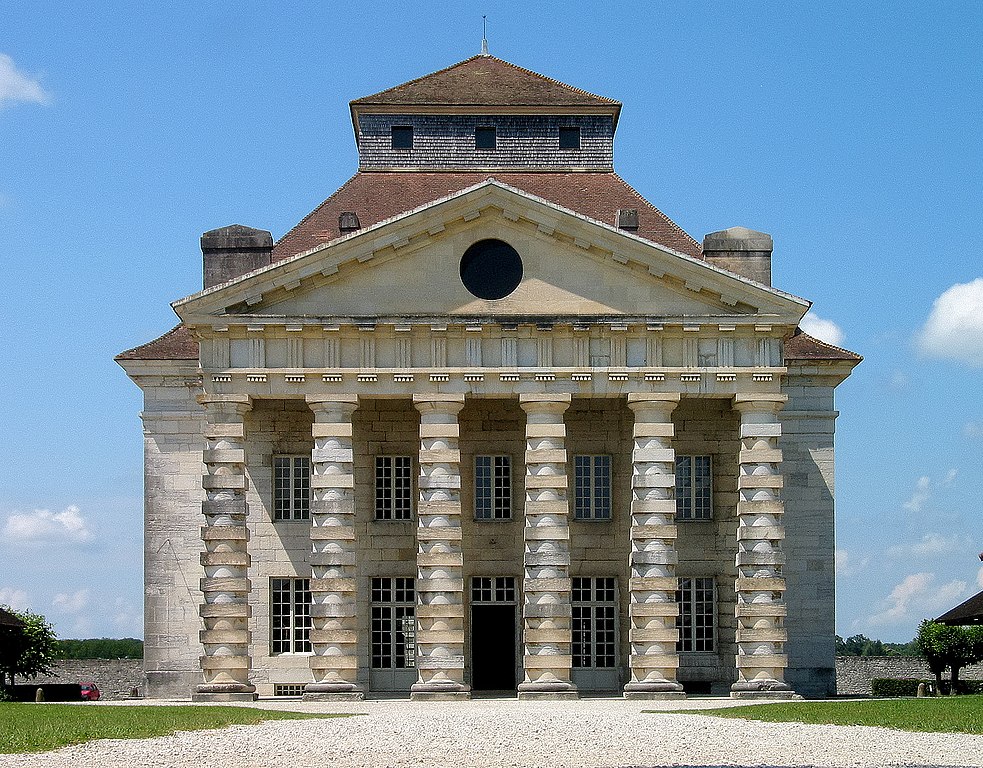
In addition to architecture, Urban Planning is a field that was greatly influenced by the Neoclassical Age. By the late 1700s, some architects began using Neoclassical Design principles when planning out large urban areas. One of the first examples of this is Claude Nicolas Ledoux’s plan for the Royal Salt Works at Chaux. Ledoux was commissioned by the French King Louis XV to design a master plan for the salt works complex. His design is a radial plan: with a central building that housed the facility’s director, and an array of other buildings surrounding an open green space. The hierarchy of the layout was the main design concept. This same scheme was redone in other notable works of Neoclassical Urban planning, such as Thomas Jefferson’s design for the campus of the University of Virginia.
What are the greatest examples of Neoclassical Architecture?
Neoclassical Architecture was a rapidly evolving design movement that began in the late 18th century and lasted until the start of the 20th century. Neoclassical architects attempted to replicate the once-great buildings of the Greeks and Romans, which by then mostly lay in ruin. Neoclassical Architecture was a truly global style, and this list will attempt to showcase some of the finest, most innovative, and most impressive examples of Neoclassical Architecture; highlighting various buildings from the Neoclassical Age.
1. U.S. Capitol Building – Washington D.C., U.S.A.

In the 19th century, the newly formed U.S. Federal Government was in need of new buildings to house various state functions. U.S. politicians were eager to develop a unified architectural style for the nation: and they chose the Neoclassical Style. This was deliberate because they wanted to evoke the ideas of the strong and successful governments of the ancient world, such as the Democracy of Athens and the Republic of Rome. Eventually, in the year 1791, the decision was made to move the U.S. capital from Philadelphia to the newly established city of Washington D.C. The government then commissioned a vast network of buildings known as the National Mall, and the U.S. Capitol Building is the largest and most iconic structure within the complex.

The Capitol Building was constructed over time, beginning in 1793. Work continued on and off until the final touches of the dome were completed in 1866, after the conclusion of the American Civil War. It features all of the typical elements of Neoclassical Architecture, including Corinthian Column Capitals, Pediments, and of course the massive central dome. This design was then replicated throughout the architecture of Washington D.C., and many buildings, including the White House, the Jefferson Memorial, and the Lincoln Memorial are all designed in a similar Neoclassical fashion.

The interior of the U.S. Capitol Dome contains many of the typical elements found in Neoclassical Architecture. There is a coffered ceiling, and an elaborately carved Frieze stretching across the entire drum of the dome. Today the U.S. Capitol Building remains a symbol of the American Government, and it’s proudly featured on America’s 50 Dollar Bill. It houses many government entities, including the U.S. Senate and the House of Representatives. The Capitol Building is positioned atop Capitol Hill, and it’s visible from all over Washington D.C.
2. Trafalgar Square – London, England, United Kingdom

Trafalgar Square is one of the most popular public spaces in all of London, and it’s filled with several incredible examples of Neoclassical Architecture. In the image above, you can see two Neoclassical buildings, The National Gallery on the left, and the Church of St. Martin in the Fields on the right. Both buildings feature entrances replicating various Greek and Roman temples found throughout Europe and the Mediterranean. The National Gallery was completed in 1838, and it’s one of London’s most popular museums. It contains a vast quantity of paintings spanning centuries worth of art movements, including highlights by Jan van Eyck, Leonardo di Vinci, Titian, and Vermeer.


Trafalgar Square is named after the famous Battle of Trafalgar. The battle was fought during the Napoleonic Wars, and it was a stunning victory for the British Navy over a combined force of the Spanish and French ships. The British commander who spearheaded the victory was Lord Horatio Nelson, often referred to as “Admiral Nelson.” Nelson died during the battle after he was hit with shrapnel, but he would go down in history as one of the English’s most important national heroes. In the center of Trafalgar Square, there is a large Triumphal Column dedicated to Lord Nelson. The monument is a work of Neoclassical Architecture that replicates many of the Victory Columns constructed by the Ancient Roman Empire.
3. Palace of the Argentine National Congress – Buenos Aires, Argentina
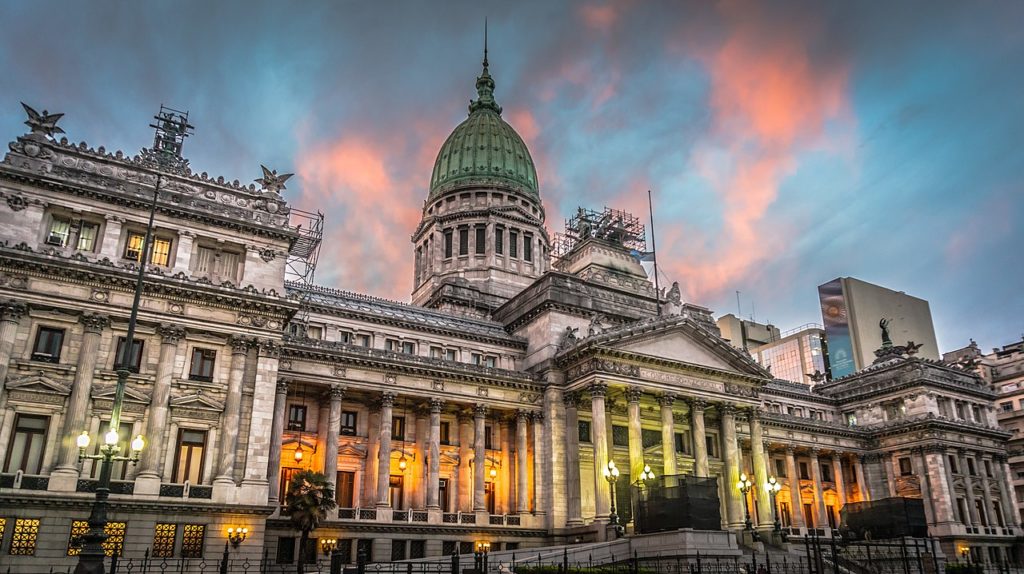
Just like with the Capitol Building in the United States, Neoclassical Architecture was utilized for different government buildings throughout Latin America. One of the greatest examples of this is the Palace of the Argentine National Congress, located in Buenos Aires, Argentina. The building was constructed from 1898 to 1906, and it features one of the most impressive domes on this list. The Palace of the Argentine Congress is one of Buenos Aires’ most infamous landmarks, and it stands tall over the adjacent Plaza del Congresso within the city center.
4. San Francesco di Paola – Naples, Campania
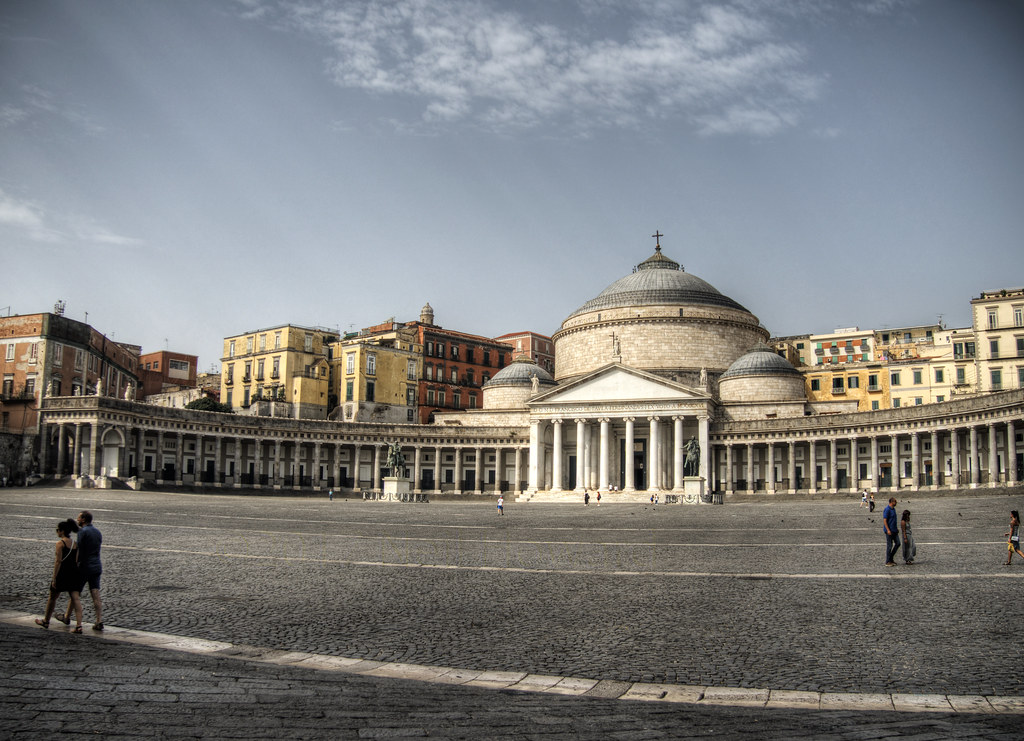
Naples is one of the densest cities in all of Europe, and it can often be hard to find large open spaces in the city center. The Piazza del Plebiscito is one of the few exceptions to this. It’s one of the most impressive Piazzas in all of Italy, and the main building fronting the piazza is the Church of San Francesco di Paola. The church is built in the Neoclassical style and was completed in the year 1816. The main body of the church resembles the Pantheon but with additional domes and a large symmetrical colonnade on either side of the entrance. The church also shows the hierarchy of the Classical Orders, with Doric-style columns along the collonade and Ionic-style columns beneath the Pediment at the main entrance.
5. The British Museum – London, England, United Kingdom
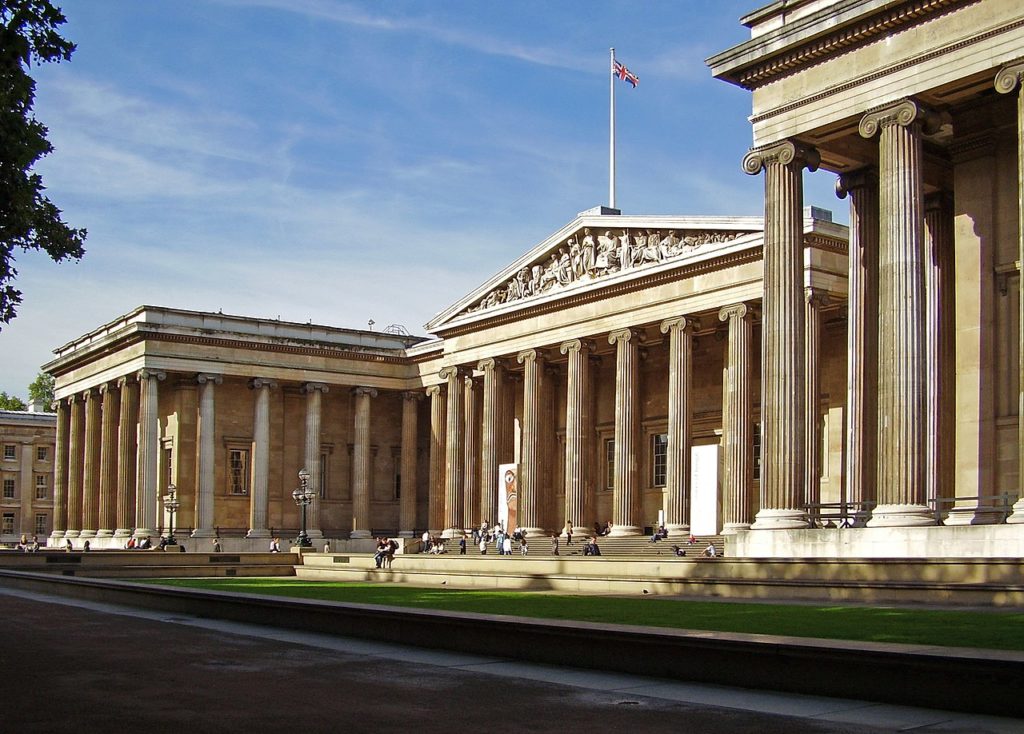
During the Neoclassical Period, dozens of large museums were constructed throughout the world, and The British Museum in London is one of the greatest examples of this. The British Museum contains artifacts and artwork related to British History, spanning from ancient times all the way to the days of European Colonialism. The exterior of the museum is typically Neoclassical, with a whitewashed color scheme, Ionic Columns, and a large triangular Pediment signifying the main entrance. The interior courtyard of the museum was heavily modified in the 1990s, and a large glass bubble dome was added by Norman Foster & Partners. This courtyard is officially called Queen Elizabeth II Great Court, and it’s one of the many incredible reasons to visit the British Museum.
6. Panthéon – Paris, France

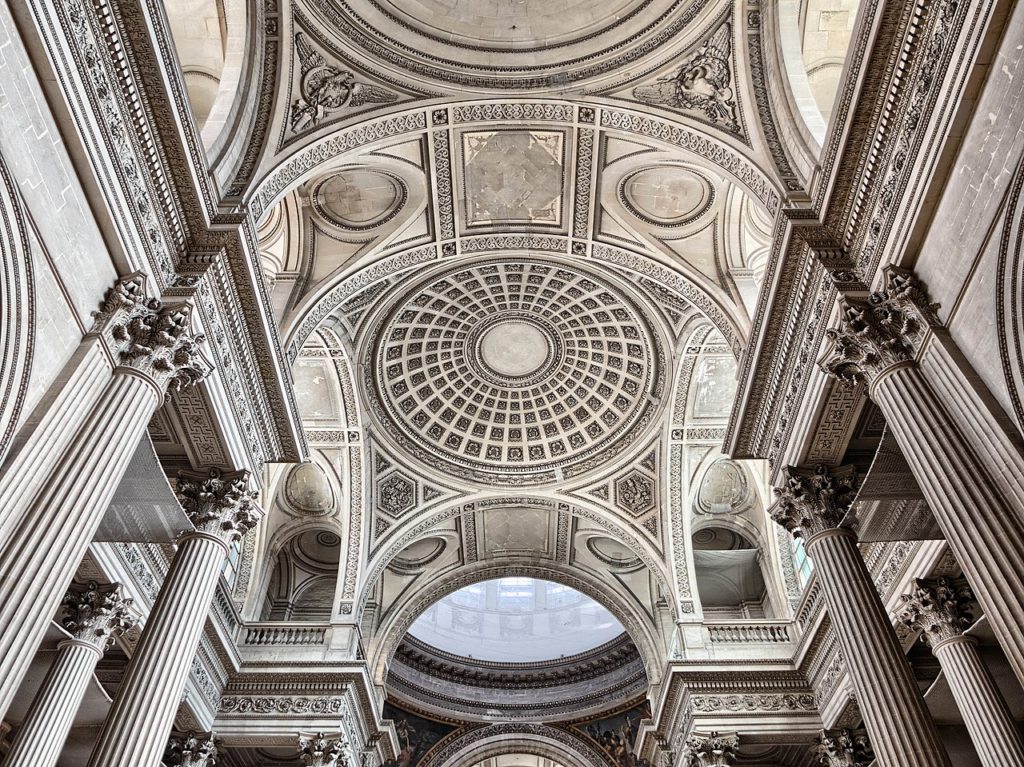
Just like many other works of Neoclassical Architecture, the National Panthéon in Paris was made to embody the same ideas found in the original Ancient Roman Pantheon. The Parisian Panthéon was commissioned by King Louis XV in 1758, and was completed in 1790 during the reign of Louis XVI. The Panthéon is located in the heart of Paris’ Sorbonne Neighborhood, and it utilizes all of the typical elements found in Neoclassical Architecture. The interior of the building is particularly striking, with its coffered ceilings, Corinthian Columns, and Multiple Domes.
7. Victor Emmanuel II Monument – Rome, Italy

Vitorio Emmanuel II was the first King of Italy, and he ruled from 1861 until 1878. He was instrumental in coordinating the Unification of Italy, which was complete by the year 1871. The monument for Vitorio Emmanuel II was commissioned after his death, and construction began in 1885. It’s located within Rome overlooking Piazza Venezia. It’s the most well-known work of Neoclassical Architecture in Rome and the design features a large monumental staircase leading up to the main structure.
8. El Capitolio – Havana, Cuba
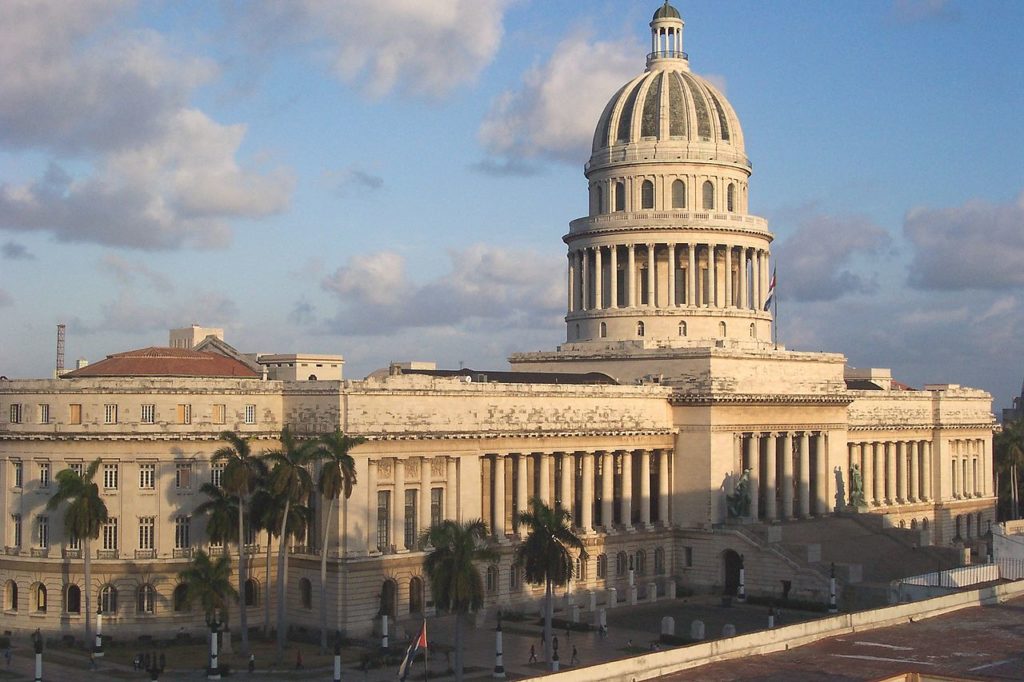
Like the Palace of the Argentine National Congress, El Captolio is another incredible work of Neoclassical Architecture found in Latin America. It was constructed in Cuba’s Capital city Havana, starting in the year 1926. This makes it a very late work of Neoclassical Architecture, and it was constructed after much of the world was building Art Deco, Art Nouveau, and Beaux-Arts Style buildings. Although the Cuban government has seen a major regime change since El Capitolio was completed, the building still stands as a testament to the Cuban Government. It’s located in central Havana, overlooking a popular green space known as Parque de la Fraternidad.
9. Helsinki Cathedral & Senate Square – Helsinki, Finland
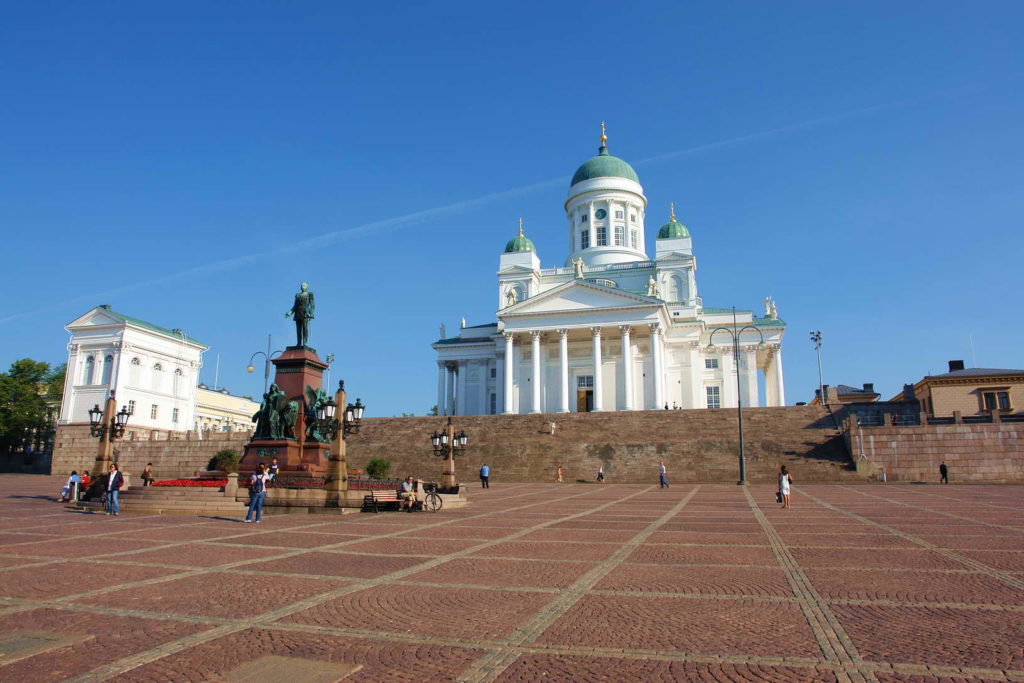
Helsinki is the capital of the Scandinavian nation of Finland, and it’s filled with many great examples of Neoclassical Architecture. You can see this within Senate Square, a large public space in the center of the city that houses several government buildings in addition to Helsinki Cathedral. Many of these buildings date to the period when the Russian Empire controlled Finland. Today, parts of Helsinki greatly resemble other Russian cities such as St. Petersburg. Helsinki Cathedral was completed in 1852, and it features a large pediment above the entrance, a dome, and a large centrally planned interior space similar to many churches found in Eastern Europe and Russia.
10. Lincoln Memorial – Washington D.C., U.S.A.

The Lincoln Memorial is a Neoclassical building located in Washington D.C. The monument commemorates Abraham Lincoln, who is regarded as one of the U.S.‘s greatest presidents. He worked tirelessly to preserve the unity of America during the Civil War, and he famously signed the Emancipation Proclamation in 1863. This document outlawed slavery throughout the United States, and it’s seen as a pivotal moment in the nation’s history. The Lincoln Memorial is a simple boxy design, featuring a line of Doric Columns along the front facade. Inside, there is a colossal marble statue depicting a seated Abraham Lincoln. The Lincoln Memorial is the termination point of the grand axis that stretches from the U.S. Capitol Building, down the National Mall within Washington D.C.
11. Monticello & The University of Virginia – Virginia, U.S.A.
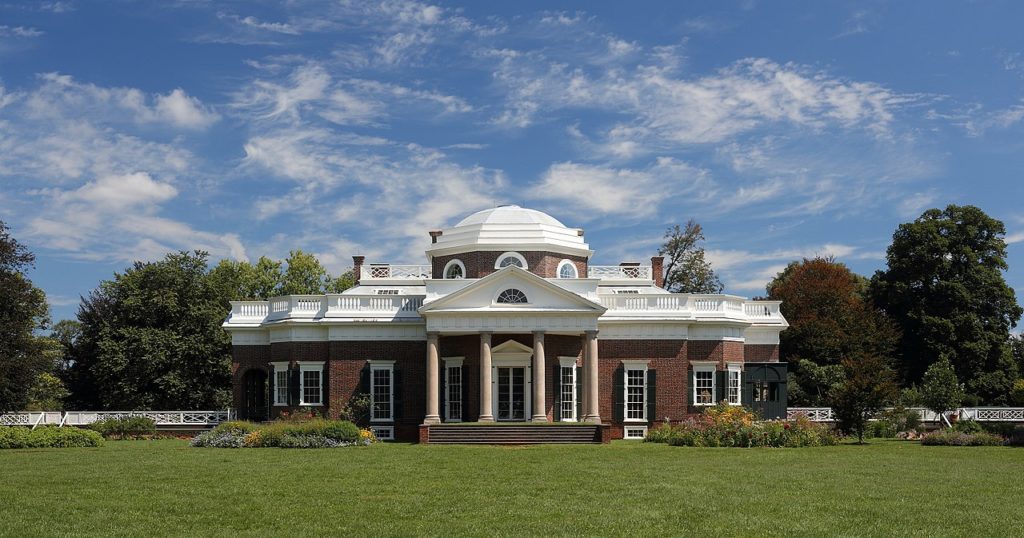
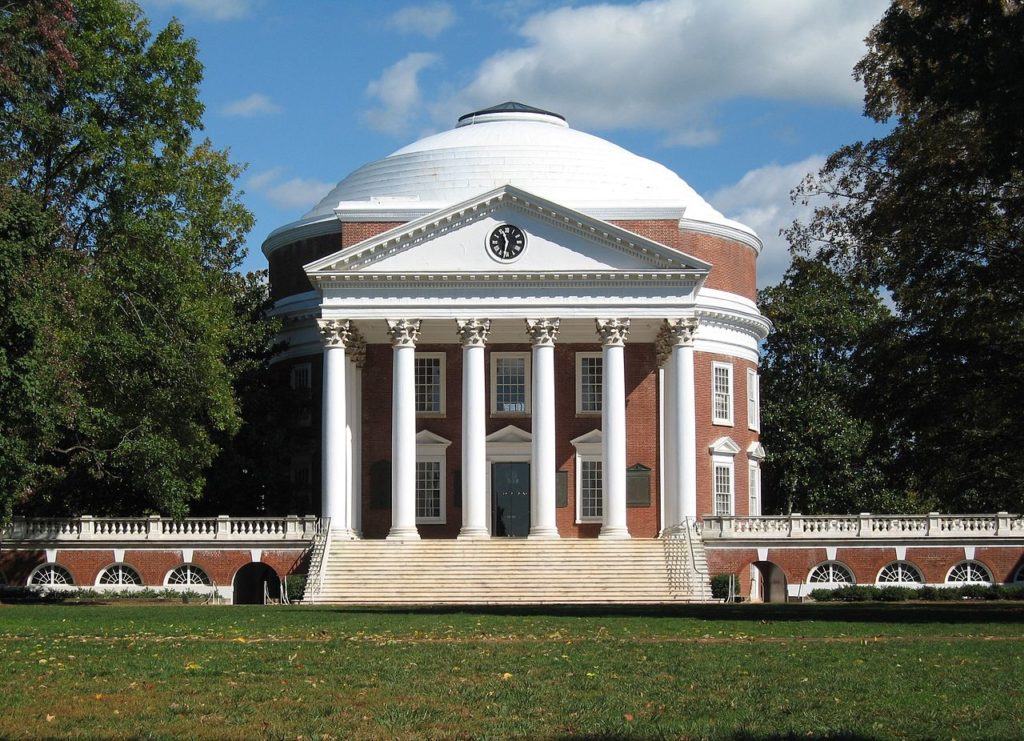
(left) Photo by Martin Falbisoner from Wikimedia Commons
Thomas Jefferson is known as one of the “Founding Fathers” of the United States. He wrote the Declaration of Independence, and he was a skilled politician, a businessman, and a phenomenal architect. Jefferson worked primarily in the Neoclassical Style, and his two greatest works are Monticello and the campus of the University of Virginia. Monticello was Jefferson’s own residence, and the building is now listed as a UNESCO World Heritage Site. At the University of Virginia, Jefferson drew up a master plan for the entire campus, and he designed the campus’ famous Rotunda Building – which you can see in the right image above.
12. St. Isaac’s Cathedral – St. Petersburg, Russia
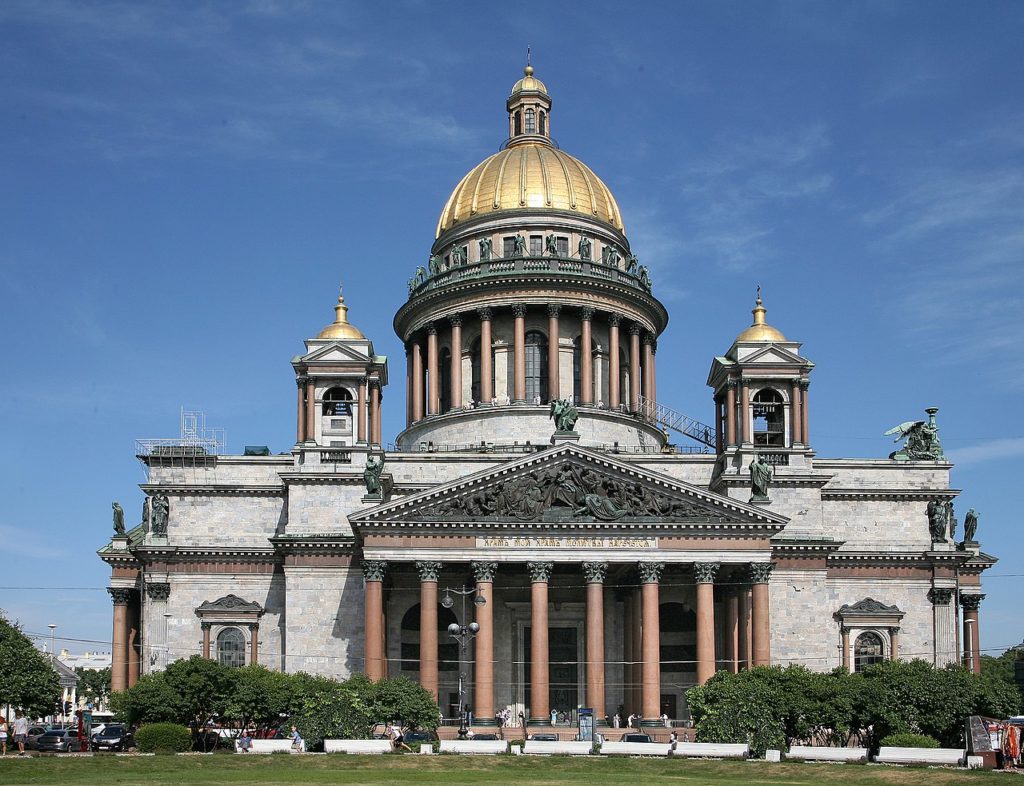
St. Isaac’s Cathedral is a large Neoclassical Church located in St. Petersburg, Russia. In 1713, Russian Tsar Peter the Great moved his capital from Moscow to St Petersburg. This change sparked a huge building boom within the city, and today St. Petersburg is filled with countless examples of Baroque, Rococo, and Neoclassical Architecture. St. Isaac’s was completed in 1858, and it features all of the typical elements of the Neoclassical Style. Each facade is nearly identical and they all contain a central temple-front style entrance with a triangular Pediment and Corinthian Columns. The church is unique because, it contains an abundance of bronze-cast statues and friezes, with even the column capitals themselves being made from bronze.
13. Brandenburg Gate – Berlin, Germany

One of the most iconic sights in all of Germany, the Brandenburg Gate is a large, monumental gateway located in Berlin. It was completed in 1791 and is located on the site of one of the original gates into Berlin. The gate is designed using the Greek Doric Order, and it is topped with a large bronze statue of a female figure driving a chariot. Similar statues were built in many ancient Roman buildings, and the Prussian Rulers of Berlin wanted to commemorate their victories in the same way the Romans did. The Berlin Wall once stood just beyond the Brandenburg Gate, and some of the first segments of the wall were demolished here beginning in 1989.
14. Museo del Prado – Madrid, Spain


The Prado Museum, also known as the Museo del Prado, is a notable work of Neoclassical Architecture located in the Spanish capital of Madrid. The museum houses thousands of works of art spanning from the Romanesque period up until modern times. The museum was built in several distinct phases. In the left image above you can see the main Neoclassical Facade that was designed by Juan de Villanueva in 1785. The Prado contains one of the world’s greatest art collections, and many of the paintings and sculptures inside once belonged to the Spanish Royal Family. Some of the collection’s highlights include works by Spanish artists such as Francisco Goya, El Greco, and Diego Valasquez.
15. Arc de Triomphe – Paris, France

One of the big ideas behind Neoclassical Architecture is a return to the traditional forms found in the buildings of the ancient Greeks and Romans. The ancient Romans in particular, built many Triumphal Arches as a way to commemorate important people and events. Rome itself contains three major Triumphal Arches, decorated to emperors Titus, Constantine, and Septimius Severus. The Arc de Triomphe is a newer adaptation of this same idea, and it was completed in 1836. It was built to commemorate all of the lives that were lost in the French Revolution and the subsequent Napoleonic Wars that occurred throughout the early 19th century.
16. Academy of Athens – Athens, Greece

The Academy of Athens is a modern institution that is meant to serve as the leading education & research organization for the nation of Greece. Many people connect the modern-day Academy of Athens with the ancient Athenian schools that were led by philosophers such as Plato. The building itself is a typical Neoclassical Design, with a central temple-front facade flanked by separate wings. This design resembles many other museums and educational institutions, such as the British Museum in London. On either side of the main entrance are two columns topped with ancient deities. These Trimphal Columns were built in both ancient and modern times and can be found in cities like Venice, Istanbul, Rome, and Lisbon.
17. Altes Museum – Berlin, Germany

Berlin saw a major building boom during the 1800s when the German Kingdom of Prussia was reaching its peak. The Altes Museum was completed during this time period in addition to many other Neoclassical Structures such as the Brandenburg Gate. The Altes Museum was constructed during the 1820s, and today it houses a large collection of ancient artifacts and artwork. The museum is very boxy with a front facade lined with a colonnade of Ionic Columns. In addition to many other works of Neoclassical Architecture in Berlin, the Altes Museum was inscribed as a UNESCO World Heritage Site in 1990.
18. General Staff Building – St. Petersburg, Russia

The General Staff Building is a massive work of Neoclassical Architecture located in St. Petersburg. It once housed several important government functions, which have since been relocated to Russia’s current capital, Moscow. It sits on the opposite side of Palace Square, across from the Baroque Style Winter Palace. Within the center of the square is a monument known as the Alexander Column, which is one of the world’s tallest free-standing Triumphal Columns. Its meant to commemorate the Russian Victory after the failed invasion by Napoleon in 1812.
19. Jefferson Memorial – Washington D.C., U.S.A.
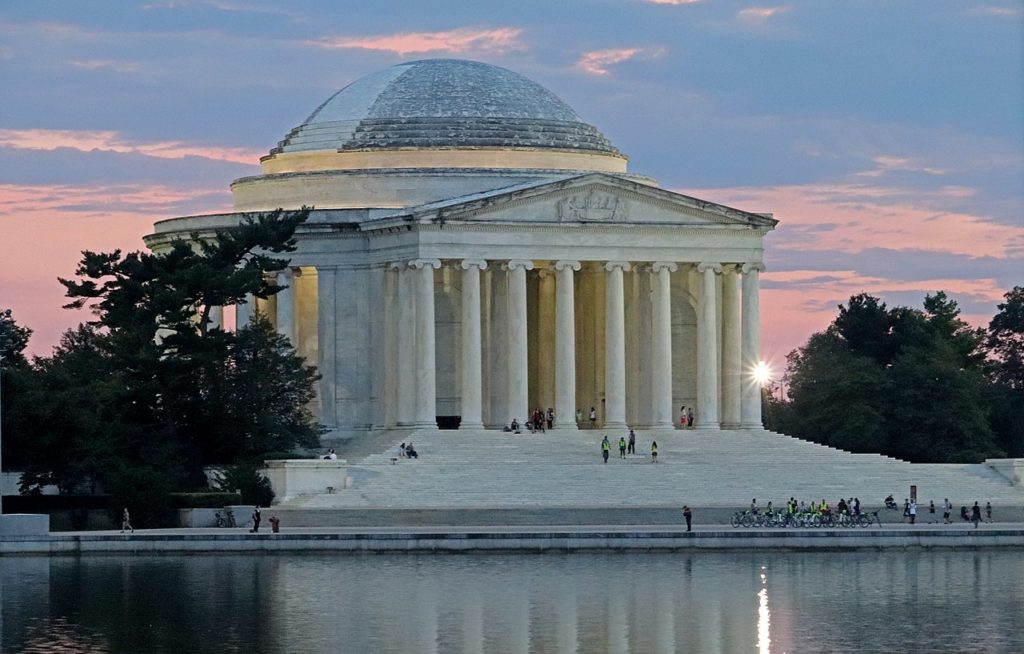
The Jefferson Memorial is the third work of Neoclassical Architecture on this list within the U.S. capital of Washington D.C. It is located on a small island in the Potomac River directly adjacent to the National Mall. The memorial commemorates Thomas Jefferson, a founding father of the U.S. and the writer of the Declaration of Independence. Jefferson himself was a Neoclassical Architect, and two of his designs are listed above at #11 on this list. The overall form of the Jefferson Memorial greatly imitates that of the Pantheon in Rome, with a large dome, Ionic Columns, and a Pediment over the main entrance.
20. Palais de Justice – Brussels, Belgium

The Palais de Justice is a large Neoclassical Court Building located in Brussels, Belgium. Neoclassical Architecture was utilized throughout the world and can be seen in many examples of museums, government buildings, and other municipal buildings such as courthouses. Construction began on The Palais de Justice in 1866 and the final touches were completed on its gilded dome in the year 1883. The exterior is very intricate, with lots of stone carvings, statues, and decorative friezes. The building was critically damaged during WWII, and since then, extensive modification and restoration efforts have been made. In the image above you can see scaffolding throughout the exterior of the building, which has been used by a restoration crew that’s been working since the 1980s.
21. Egyptian Museum – Cairo, Egypt

The Cairo Egyptian Museum houses one of the world’s greatest collections of ancient Egyptian artifacts, including many of the treasures found within the tomb of King Tutankhamun. The building was constructed in 1901 and is a blend of Neoclassical Architecture paired with a few influences from Ancient Egyptian Architecture. For instance, the facade has statuary niches like on many other Neoclassical buildings, but the statues inside depict ancient Egyptian Pharaohs instead of Greek deities. Once Egypt’s leading museum for ancient Egyptian artifacts, the Cairo Egyptian Museum was surpassed in 2022 by the modern-day Grand Egyptian Museum, located in nearby Giza.
22. Königsplatz – Munich, Bavaria, Germany

Photo by High Contrast from Wikimedia Commons
The Kingdom of Bavaria lasted from 1806 until 1918 and was one of the great German states of the 19th century. The various kings that ruled during this time commissioned many different building projects throughout their capital in Munich. Throughout the 19th century, work was underway on the Königsplatz, a large square containing several different examples of Neoclassical Architecture. The image above shows the Propyläen on the left side and the Glyptothek on the right. Both buildings contain all of the typical Neoclassical Design elements, including Pediments, Statuary Niches, and decorative Friezes.
23. Church of Our Lady – Copenhagen, Denmark

Copenhagen is a city in Scandinavia that’s known for its abundance of Neoclassical Architecture. In 1807, Copenhagen was bombarded by a fleet of British ships, and the attack was so devastating that large portions of the city had to be rebuilt. Many of the old timber-framed buildings were replaced by new more modern works of Neoclassical Architecture. The church of Our Lady was completed in 1829 and is one of the most impressive Neoclassical buildings from this time period. The image above is a view of the church’s interior looking down the nave. Here you can see many Neoclassical design elements such as Doric Columns, marble sculptures, and a coffered ceiling.
24. Dublin Custom House – Dublin, Ireland

The Dublin Custom House is a large work of Neoclassical Architecture overlooking the Liffey River in Dublin, Ireland. It was completed in the late 18th century and originally served as a customs house, but today it mostly just holds government offices. Dublin is filled with many great examples of Neoclassical Architecture all dating from the last two centuries of British rule over the city. In addition to the Dublin Custom House, Dublin City Hall, and the Dublin Courthouse all share similar characteristics of Neoclassical design, making downtown Dublin a dynamic location for both modern and historic buildings.
25. Teatro Massimo – Palermo, Sicily, Italy

The Massimo Theater was once the third-largest Opera House in Europe, after Paris and Vienna. It opened in 1897 at a time when operatic performances were reaching their peak in popularity amongst members of European high society. The theater itself can hold almost 1,400 people and the surrounding square is one of the most popular hang-out spots in all of Palermo. Although it’s the only theater on this list, many theaters and opera houses were designed using Neoclassical Architecture. This is all due to the popularity of the performing arts in the late 19th century, before other forms of entertainment, such as television and film, began to emerge in the early 1900s.
Neoclassical Museums
Museums were huge from the late 18th to the 19th century. As many of the world’s old regimes gave way to new, more democratic societies, vast collections of art and artifacts once owned by the ruling elite were then put on display for the public to view. Some of the world’s greatest museums such as London’s National Art Gallery, and Madrid’s Prado Museum date from this time period. Other museums such as the Louvre in Paris and the Hermitage Museum in St. Petersburg were established at this point in time, however, they are housed in older buildings from the Baroque Age.

This frenzy of museum construction was also felt in the United States of America. Many different East-coast cities such as New York, Boston, and Philadelphia all completed major museums in the late 19th and early 20th centuries. The image above shows the Philadelphia Museum of Art which opened in 1928. It’s a great example of late-stage Neoclassical Architecture, and it follows the same design principles as many of the other buildings listed above. The museum is famous for its large monumental staircase, which was featured in the movie “Rockie”

This same idea can be found in countless other cities too. The image above shows the Museum of Fine Arts in Budapest. Completed in 1906, it houses a large collection of artwork and is one of the most visited museums in all of Hungary. Budapest is filled with many different forms of Revival Architecture, including Neoclassical, Gothic Revival, Baroque Revival, and Renaissance Revival.
Neoclassical Government Buildings
Just like with museums, Neoclassical Architecture was heavily utilized in many government buildings.
During the late 18th century many autocratic regimes were being replaced by more democratic regimes. These new governments wanted to move past the excessive and extravagant buildings of the Baroque and Rococo ages and create a new form of architecture that embodied strength, equality, and modesty. Many people were inspired by the ancient governments of the Romans and Greeks, and Neoclassical Architecture was meant to connect with these older societies.
This concept is particularly evident in the United States, where the American government wanted to use a unified building style across all of its government institutions.
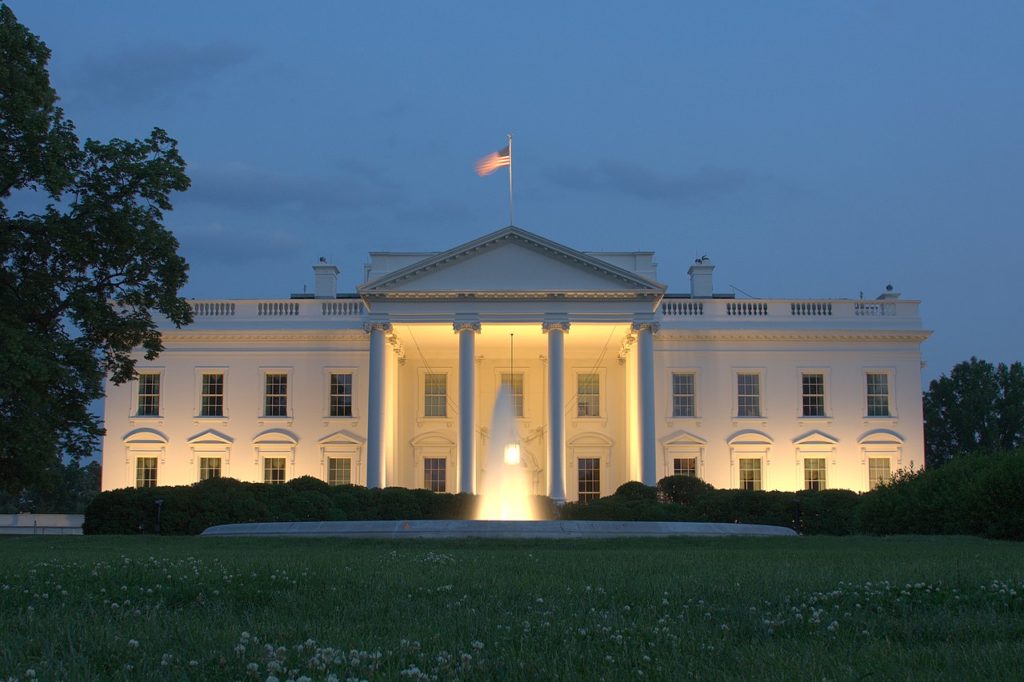
There are several government buildings in the U.S. capital of Washington D.C. that were designed in the Neoclassical Style. These include the U.S. Capitol Building, the Lincoln Memorial, and the Jefferson Memorial. In the image above you can see 1600 Pennsylvania Avenue, a building colloquially known as The White House. It’s the official residence of the U.S. President, and it’s a typical all-white Neoclassical building featuring a triangular Pediment and Ionic columns.
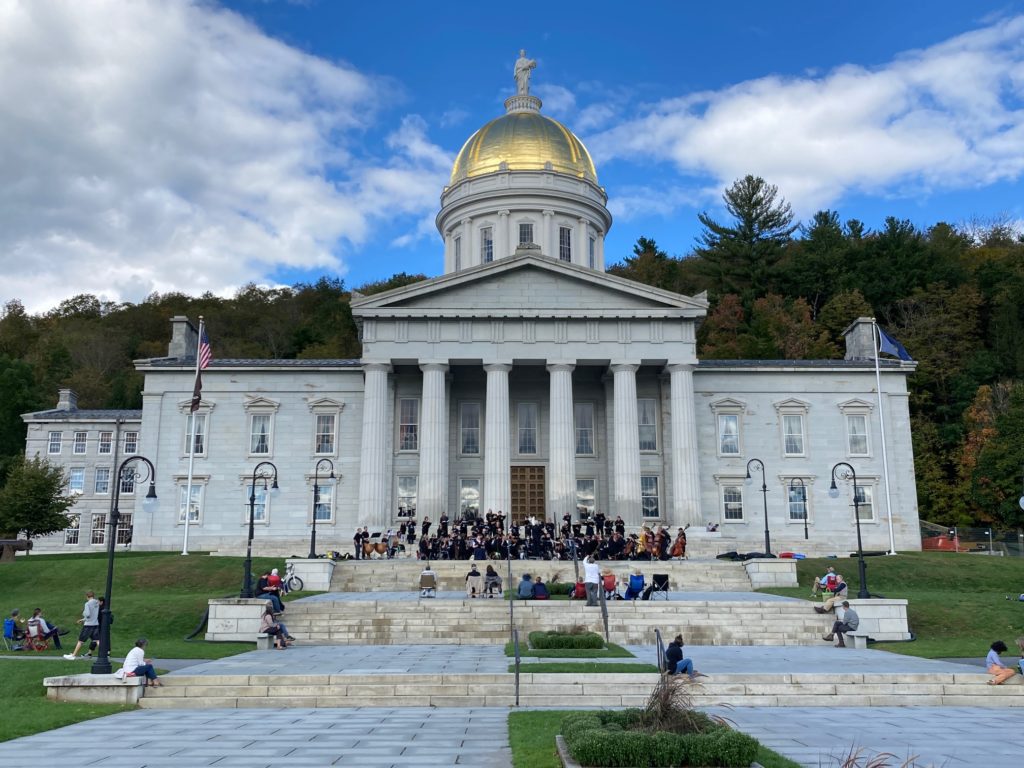
Neoclassical Architecture can also be seen in the majority of State Capitol Buildings throughout the United States. This was an attempt to create a unified architectural identity connecting both the U.S. Federal Government and the individual states within the U.S. In the image above, you can see the State House of Vermont, located in the state capital of Montpelier. It features a prominent Doric-style entrance and a large gilded dome. Some people refer to this as “Greek Revival Architecture,” which is a sub-type within Neoclassical Architecture.
Neoclassical Architecture Today
Neoclassical Architecture remains one of the major architectural movements in world history. Born after the irrational exuberance of the Late Baroque and Rococo Ages, Neoclassical Architecture was a return to the more practical and timeless designs of the ancient Greeks and Romans. Neoclassicism became a global style by the 19th century, and many cities such as Washington D.C., London, and St. Petersburg all contain great numbers of Neoclassical buildings. The Neoclassical Movement also sparked what’s often referred to as the “Revival Age” in architecture, where architects recreated older styles, such as Romanesque, Gothic, Renaissance, and Baroque. Today, there is still a strong association between Neoclassical Architecture and modern Democracy, and some of the world’s most well-known buildings were constructed during the Neoclassical Age.

- About the Author
- Rob Carney, the founder and lead writer for Architecture of Cities has been studying the history of architecture for over 15 years.
- He is an avid traveler and photographer, and he is passionate about buildings and building history.
- Rob has a B.S. and a Master’s degree in Architecture and has worked as an architect and engineer in the Boston area for 10 years.
Like Architecture of Cities? Sign up for our mailing list to get updates on our latest articles and other information related to Architectural History.
